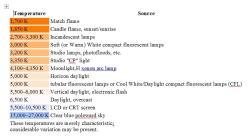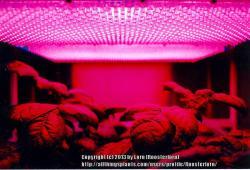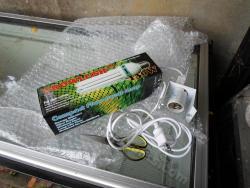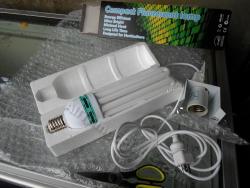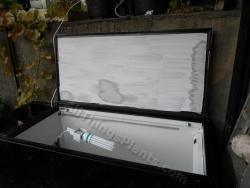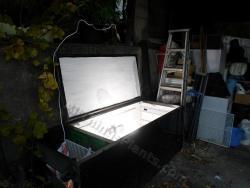Ok... so much trawling around trying to make a decision on this has finally revealed light!
You've been giving me great information, but I was just drawing a blank with retailers on and off line here. At last a really helpful lady in a speciality lighting store explained - Aust. is in the dark ages of fluoro technology. We can't get T5 gro lux tubes here at all yet. They have only just started bringing in T5 black light and insect repellent (orange) tubes. So, I could source a T5 batten, but no proper grow light tubes.
Online, 'cool light' and 'day light' flourescent T5 tubes are being sold as grow lights, but the spectrum breakdown isn't optimal like that of gro lux. One brand calls itself "grow lush", and I think others are just everyday lighting being sort of off-label marketed. Sellers are promoting the value of their lights' green and blue spectra as somehow perfect for hydro growing. Red spectrum just being pushed for 'flowering'. ie. budding. Reality is... almost no one uses lights here unless it's for hooch.
At one hydro shop the guy wanted to sell me this
http://www.philips.com.au/c/en... for $85 with no more explanation than it was "what everyone is moving to" and "it's so much better than the old fluoros", while completely ignoring the dusty T8 tubes on the bottom shelf. I had to ask, and then he knew next to nothing about them.... (which is marginally more than I really know :D).
So, T8 Gro lux tubes and battens are available, but much more expensive than some of the other set ups being hawked. (Due to the cost of a plug-inable batten or cost of an electrician to hardwire one!) I decided that if I couldn't get the T5 set up, as I aim to, then I could only afford to spend a minimal amount on a stop gap measure to experiment with. It's all a grand experiment anyway.
So... short version is that I ended up ordering this:
http://www.ebay.com.au/itm/200... The only quick, cheap solution with a reasonable peak around 620nm. (Quick - after all my months of analysis paralysis and procrastinating!! Ha!!)
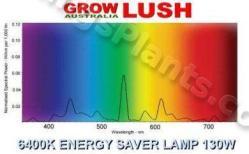
I needed the batten, but not a reflector, as I plan on making the whole inner surface of the glass door reflective. (I can tape on aluminium foil, right? Right?

)
And egads... it's felt like winter today.
